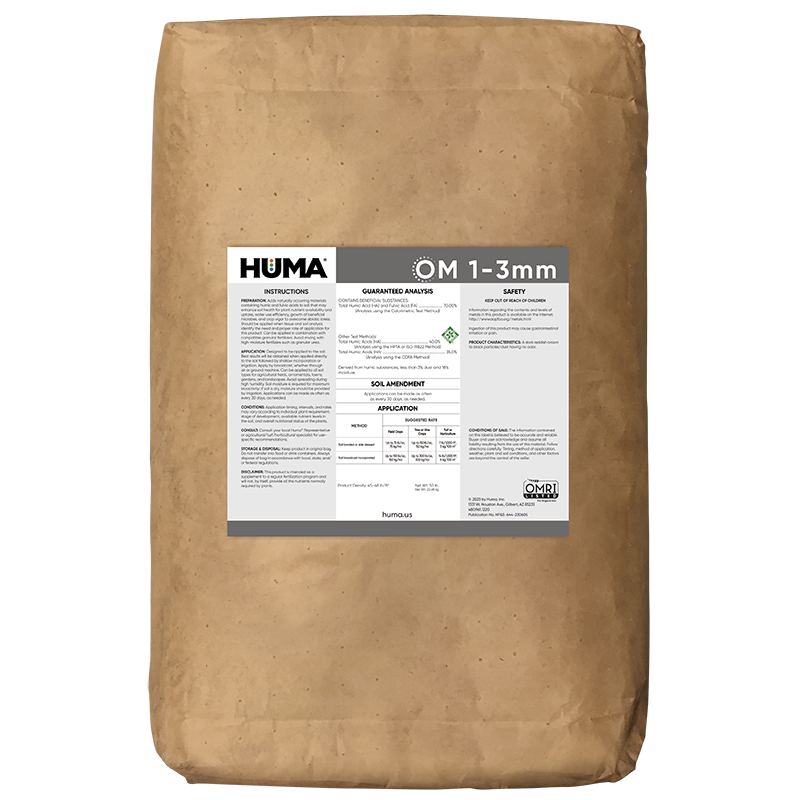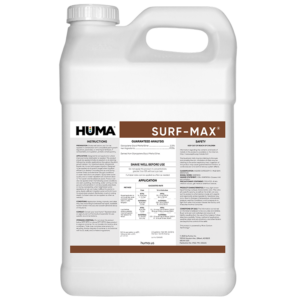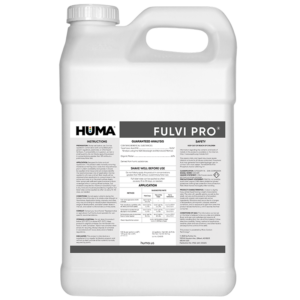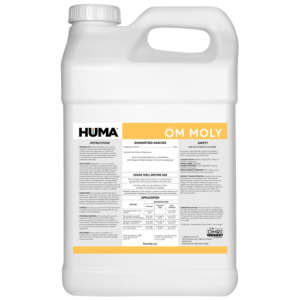OM 1-3 mm
Benefits of Use:
• Uniform granular size promotes even coverage/distribution of humic/fulvic acid for sustainable carbon benefit
• Long-term soil organic-matter building
• Increased water penetration
• Increased flocculation of clays
• Promotes conversion of fertilizer into plant-available food
• Increases soil nutrient mineralization
• Sustainable soil microbial activation
FAQs
Related Videos
Huma Minute – What is Humic Acid with Cory Ritter
Huma Mid-West Regional Sales Manager Cory Ritter discusses the different types of humic acids and what they do for your plants.
Learn More
Huma Minute – Humate Application Rates with Cory Ritter
Huma Mid-West Regional Sales Manager Cory Ritter discusses humate application rates and why there is not a one-size fits all rate.
Learn More
Huma Minute – Humic Acid Testing Methods with Cory Ritter
Huma Mid-West Regional Sales Manager Cory Ritter discusses the differences in the various humic acid testing methods.
Learn More
Related Products
Related Case Studies
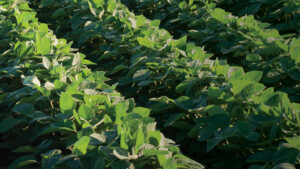
Huma® Organic 1-3 mm Dry Humate vs Biochar in Soybeans, With ROI of 4:1
Background Humates are used as soil amendments that have shown to improve crop production. The usage of biochar as a soil amendment has gained traction and has also shown to increase crop yield. Objectives The aim of this study was to test how preplant soil application of organic (OMRI-Listed) humates (Huma® OM 1-3mm) and biochar

Huma® and Zia Pueblo Farm Corn Project
Background Many small-scale farms (1-2 acres each) are established in Zia Pueblo community near San Ysidro, New Mexico. Huma® Inc. was asked to establish an experimental farm in the tribal community that could demonstrate the usage of beneficial agricultural inputs producing high-yield crop and preserving the health of the soil. Huma® humic-based products stimulate plant
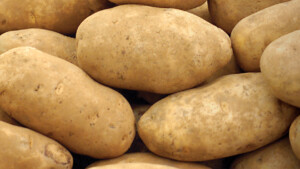
Huma® OM 1-3 mm Organic Humates Improve Potato Yield by 9%, With 5:1 ROI
Background Scientific research shows that humic and fulvic acids are biostimulants—enhancing nutrient availability and uptake, improving plant root growth and mass, and impacting both crop yield and quality. Objective The focus of this study was to assess the effect of pre-plant application of a raw humic product on potato yield. Materials & Methods One week
Related Blog Posts

From the Field: Exploring the Impact of Biostimulants in Asia
Last June, I had the privilege of visiting parts of Asia to attend a conference hosted by one of our distributors. The event brought together ag experts, farmers, and researchers from different parts of the world to discuss the future of farming. I was excited to collaborate with them all and little did I know,

This Week in Ag #1
Curly fries, waffle fries, spicy fries or… regen fries? Soon, these may all be choices in the frozen foods aisle, at least if McCain Foods has a say in it. And as the world leader in prepared potato products, purchasing 6.8 million tons of spuds annually, McCain carries a strong voice. Their commitment to sustainability includes a pledge to have regen

Global Fertilizer Day Is October 13
Global Fertilizer Day: Join us in celebrating the world's farmers. They have set themselves the almost impossible task of feeding more and more people while using less land and fewer resources.

